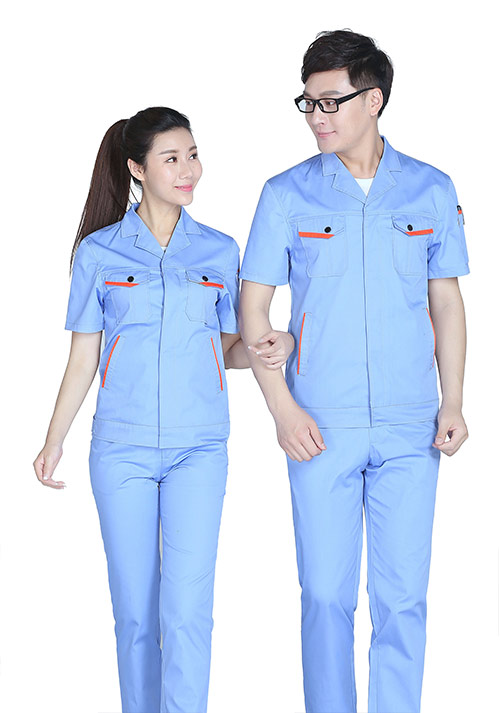Work clothes fabrics are not only related to the color and shape of work clothes, but are also crucial to the interpretation of their style and characteristics. What impact will different materials of work clothes fabrics have on the design of corporate work clothes? Let’s learn about it with Guerlain designers.

A kind of glossy work clothes fabric. It consists of satin-structured fabrics with a smooth surface that reflects light and is often used in evening wear or stage performance wear.
The second type is soft work clothes fabric. The fabrics mainly include knitted fabrics and silk fabrics with loose fabric structures, as well as soft and thin linen fabrics. It is generally thin and has good drape. The smooth styling lines make the silhouette of the garment stretch naturally. In design, straight and concise shapes are often used to reflect the graceful curves of the human body; loose and pleated shapes are often made of silk, linen and other fabrics to express the flow of lines.
The third type is cool work clothes fabric. Common such fabrics include cotton, polyester-cotton, corduroy, linen and various medium-thick wool and chemical fiber fabrics. This kind of fabric can form a full silhouette of clothing, making the lines clear and giving a sense of volume. Workwear manufacturers generally use it in designs that highlight the styling of clothing, such as suits and suits.
The fourth type is transparent work clothes fabric. This kind of fabric includes cotton, silk, chemical fiber fabrics, etc., such as georgette, satin silk, chemical fiber lace, etc. Its light and transparent texture gives the wearer an elegant and mysterious temperament. In order to express the transparency of the fabric, it is often used in H-shaped and circular cone-shaped designs with natural, full and varied lines.
The fifth type is thick and heavy work clothes fabric. This kind of fabric includes all kinds of thick woolen and quilted fabrics. It should not be pleated and piled too much. It is thick, stiff and has a strong sense of body expansion, so it is often used in A-type and H-type designs. .
Correctly analyzing and identifying the performance of work clothes fabrics and applying them to clothing design accurately and reasonably is basic knowledge that every designer needs to master. Otherwise, incorrect fabric identification may lead to problems in the design, production, wearing or washing of the entire garment. Different work clothes fabrics have different properties such as air permeability, moisture absorption, and warmth retention. When choosing fabrics, you must confirm the fabric’s performance characteristics such as breathability, heat retention, moisture absorption, and electrostatic properties, and then focus on the stiffness and weight of the fabric. Consider the softness, hardness and drape of what kind of shape it is suitable for, what kind of style it is made of, etc.
Tag: work clothes fabric







